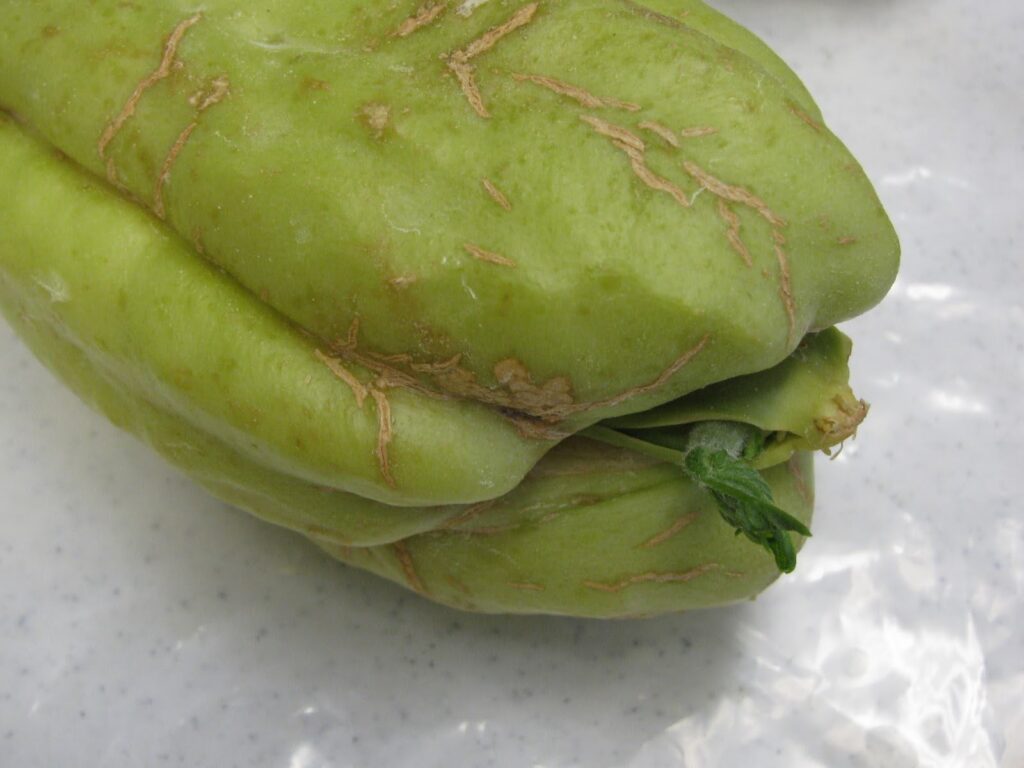by Lance Hill | Mar 28, 2024 | How To, Mirliton, Uncategorized

Did you ever notice the brown lines on some mature mirlitons? They’re a fairly reliable way of knowing if the mirliton is a locally grown Louisiana heirloom. Dr. Jorge Cadena Iñiguez, a leading world expert on chayote (mirlitons), recommends we use the term Corking or Cork lines for the brown, cork-like lines that sometimes appear on the skin surface of mirlitons.
Corking in mirlitons is a form of “lignification” and is composed of lignin, the same substance that comprises bark cell walls. It probably develops to protect the fruit from pests and disease. What is important for us is that only mature mirlitons develop cork. So, if someone is selling or gifting a mirliton with cork lines, it was probably locally grown. (Imported chayote is never left on the vine long enough to develop cork lines.)
Not all locally grown mirlitons will have cork lines; they may have been picked fresh off the vine. But if you see corking, it’s another reason to believe it’s an authentic Louisiana Heirloom mirliton.
by Lance Hill | Mar 12, 2024 | How To, Mirliton

I used to believe that mirlitons could be grown in full sun. Not anymore. Intensive heat waves in the last few summers destroyed most vines that had been grown in full sun. The only ones that survived were in natural shade or had shade cloths. We learned the hard way that mirlitons need partial shade when there is prolonged heat above 95 degrees. That, along with substantial ground irrigation, can get us through another Heat Dome or intensive heat wave.
Build your trellis so you can easily mount a shade cloth over the vine.
It can be thrown over the vine or mounted over it. Shade cloths come in different shading percentages, and we recommend 40% cloth with grommets so it does not blow away. They are available at Amazon and most big box stores. Shop around online to find one that will last for years. An Amazon link is here.
Shade cloths are only for extreme weather events. You won’t need it unless there is a heatwave where the temperatures stay above 93° for several consecutive days. Too much shade, especially in the spring and early summer, can be detrimental to the vine. The leaves need sunlight for photosynthesis to provide energy for the plant. Sunlight is a natural fungicide that prevents some plant diseases. Full sun also dries and hardens the leaves, making it more difficult for fungus to get a foothold on the vine.


Recent Comments